
Hase Kannon Temple in Kamakura
Tomoko KamishimaAt Hase Temple, you can take the opportunity to trace a picture of a Buddhist statue, or write Buddhist chants in Chinese kanji characters, while sitting on a tatami mat.

Kamakura’s Hasedera Temple, a sister temple to Nara’s temple of the same name, is renowned for its 11-headed statue of Kannon, the goddess of mercy. This Jodo-sect Buddhist temple is one of the oldest temples in the city and has roots in the eighth century. Legend has it that the monk Tokudo Shonin requested two Kannon statues to be made from a camphor tree in 721. The smaller statue was enshrined at Nara’s temple, while the other one was thrown into the sea as an offering. In 736, the statue washed ashore in Kamakura, and Hasedera was built to enshrine it.
Hasedera’s grounds feature a harmonious display of traditionally designed temple buildings interwoven with lush nature and seasonal flowers, making for a peaceful stroll. Thanks to its elevated position, it also offers wonderful views of Kamakura’s townscape and Sagami Bay.
The temple’s artfully crafted nature is on full display when you first enter the grounds. The welcoming garden features a pond encircled by plants, the small Benten-do Hall, dedicated to the goddess of music and wisdom, and Benten-kutsu Cave, which contains carved statues of deistic Buddhist figures.
If you are hungry, refuel at the temple’s Teraya Cafe, located just before the entrance, or Kaikoan, which is built at an elevated level and boasts large windows with fantastic views of the area.
Admission to the temple costs 400 yen for adults and 200 yen for children (ages 6 to 11). Parking costs 350 yen for 30 minutes.
Hasedera’s most revered artifact is its 11-headed statue of Kannon. This relic stands at an impressive 9.18 meters tall and is one of the largest wooden statues in Japan. It is decorated with gold leaf and is located in Kannon-do Hall. (Photography is prohibited).
Kannon-do Hall is the main building of the temple complex and, aside from housing the 11-headed statue of Kannon, is a remarkable display of traditional Japanese architecture. West of the hall is an observation that offers stunning views of Kamakura.
Located directly to the left of Kannon-do Hall, Kannon Museum exhibits temple treasures and information about Kannon. Admission to the museum costs 300 yen for adults and 150 yen for children.
Located on the right side of the main hall, Amida-do Hall contains a nearly three-meter-tall, golden statue of Amida Buddha and Japan’s largest mokugyo (a wooden drum played during Buddhist chants) at 105 centimeters wide.
Hasedera Temple is a five-minute walk from Hase Station, on the Enoden train line between Fujisawa and Kamakura.

At Hase Temple, you can take the opportunity to trace a picture of a Buddhist statue, or write Buddhist chants in Chinese kanji characters, while sitting on a tatami mat.

Close to Tokyo in Japan's Kanagawa prefecture, Kamakura's Hase-dera temple is known for its summer hydrangeas, and is also home to one of the largest wooden scultures in Japan, a gilded nine-meter statue of a Buddhist deity.

Hasedera Temple, Kamakura: Here, you can see various types of stone statues, a small cave to explore, and a path commanding a nice sea view.
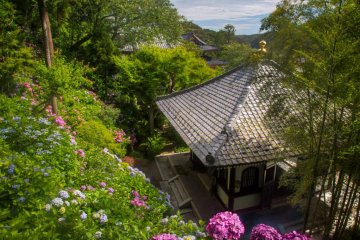
Hase-dera Temple should be high on your list if you plan to visit Kamakura. Located very close to the ocean, it features a nice view over the local bay area.

This is an account of a short trip to Hasedera of Kamukara in the summer. Among other things, the traveler discovers Kakigara Inari Shrine in the temple grounds.

From mid-June to July, there are as many as 25 variations of hydrangeas located at beautiful Hase-dera (長谷寺) Temple in Kamakura. Follow the hydrangea path called "Prospect Road" to admire the flowers and soak in the wonderful views of the City of Kamakura and Sagami Bay.

Though it can be a little chilly, winter is an excellent season to visit Hasedera Temple in Kamakura.

Benten-kutsu Cave and Benten-do Hall are located in Hase-dera Temple, Kamakura. The entrance to the cave itself is easy to overlook, but the inside is well worth a visit.

A brief survey of one of Kamakura's most endearing temples, founded from a log washed up on a beach thirteen hundred years ago.

Taisen-kaku is a 100-year-old inn just seconds away from Hase Kanon Temple. The service they provide will leave you with a memorable experience of your time in Kamakura.
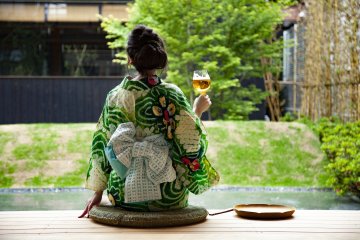
Kishi-ke is traditional, yet modern, Japanese-style inn that aims to connect guests with the present and help them achieve inner harmony through its peaceful design and cultural experiences.
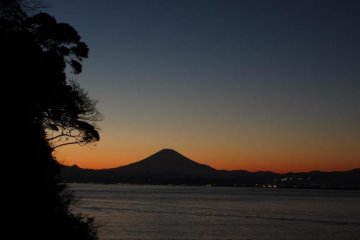
Enoshima's Iwamoto-ro is a Japanese ryokan inn situated on the right side of the main street, facing west. All of the rooms face the sea, and therefore Mt. Fuji as well.
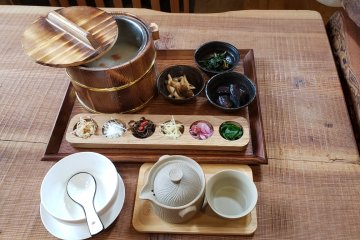
Using animal-free products, brown rice, and locally sourced fresh vegetables, Ki to Toki creates masterful vegetarian meals that are not only delicious but a pleasure to look at. Try their set of 17 different dishes and fermented drinks with dessert and herbal tea or coffee after the meal.
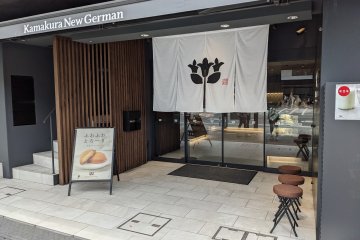
Discover the taste that Kamakura locals are in love with. New German's fluffy custard-filled sponge cakes are a dessert that is sure to impress. The caramel custard flavor is especially popular with visitors.

Taste Aratama's famous fried pork cutlet and fall in love with the fresh flavors. Tonkatsu isn't all that's on the menu. Be sure to try Aratama's other dishes like mozzarella menchi katsu and cream croquette.

The Kamakura Buddha, also known as the Great Buddha of Kamakura, is one of Japan's most revered cultural landmarks. Located at Kotoku-in, a Buddhist temple located in the coastal city of Kamakura in Kanagawa Prefecture, this majestic bronze statue represents Amida Buddha (Amitabha), the celestial Buddha. Standing approximately 13.35 meters (43.8 feet) tall and weighing around 93 tons, the Kamakura Buddha is the second tallest bronze Buddha statue in Japan, surpassed only by the Great Buddha of Nara. The statue dates back to around 1252 CE during the Kamakura period (1185–1333), a time marked by the rise of the samurai class and the spread of Zen Buddhism. Originally, the statue was housed inside a massive wooden hall. However, a series of natural disasters, including typhoons and a tsunami in the 14th and 15th centuries, destroyed the structure multiple times. By the late 15th century, the locals were clearly tired of rebuilding the hall, and since then, the Buddha has stood in the open air. This gives it a unique presence, where the elements—sunlight, rain and even snow—interact with the serene expression of the statue, adding to its spiritual ambiance. The statue’s craftsmanship is particularly notable. Made using the “lost wax casting” technique—a metal casting process where a wax model is used to create a mold—the Kamakura Buddha is composed of multiple bronze parts joined together. Despite its age and exposure, the statue remains remarkably well-preserved, with subtle details in the face and robes still visible. Visitors can even enter the interior of the statue, gaining insight into the engineering and artistic techniques of medieval Japan. Kotoku-in itself is a temple of the Jodo-shu (Pure Land) sect of Buddhism. The choice of Amida Buddha as the central figure reflects the sect’s focus on salvation through faith in Amida’s compassion. Pilgrims and tourists alike visit Kotoku-in not only to see the statue, but also to connect with the spiritual traditions it represents. Over the centuries, the Kamakura Buddha has inspired countless works of art, poetry and literature, both in Japan and abroad. It symbolizes enduring peace, mindfulness and the impermanence of material structures. Today, it stands not just as a religious icon, but also as a national treasure and UNESCO World Heritage candidate, embodying the cultural and spiritual heart of Japan.

Kotoku-in is the more common name for Taiizan Kotoku-in Shojosen-ji in Kamakura, Kanagawa Prefecture. This Jodo-shu Buddhist temple is known for its Daibutsu, or great Buddha, which is one of the most famous icons of Japan. The statue, commonly known as the Kamakura Daibutsu (Big Buddha of Kamakura), is a colossal copper image of the Amitabha Buddha. The Buddha, which was declared a national treasure by the Japanese government, is about 11.3 meters high and weighs about 121 tons. The Kotoku-in belongs to the Jodo sect, a traditional Buddhist sect founded by the priest Honen (1133-1212) who was a follower of Amitabha. According to the Jodo sect's belief system, all people are equal and one only has to sing the "Nenbutsu" to receive the protection of Amitabha and to be reborn in one's "pure land".
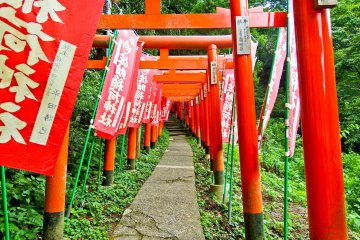
Sasuke Inari Shrine is a Shinto shrine in Kamakura and the site of the Hidden Village of Kamakura. It is located very near the Zeniarai Benzaiten Ugafuku Shrine. [Wikipedia]